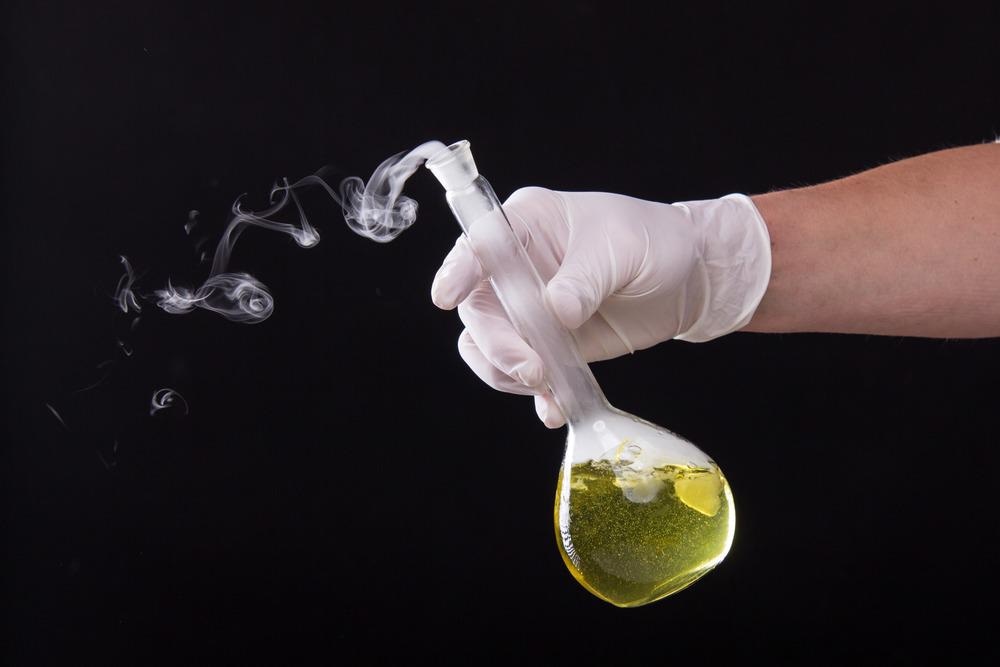Catalysts hold a significant part of many industries and are involved in more than 80% of manufactured products. The enhancement of the catalytic process can be through the breakdown of heterogeneous catalysts into metal nanoparticles due to metal nanoparticles having a high surface area. The use of nanoparticles within these materials can improve the catalytic process as well as reduce harm to human health and the environment.

Image Credit: Michal Ludwiczak/Shutterstock.com
Heterogeneous nanoparticle catalysts hold an essential role in modern and environmentally friendly processes. This includes hydrogen gas production for fuel and featuring predominantly in automotive catalytic converters. As catalysts are critical for increasing production rates with lower temperature requirements, they can reduce the energy needed for a particular process.
Improving the catalytic process through nanoparticle observation would enable further development of applications such as product development while also prioritizing a greener environment.
The significance of catalysts to accelerate chemical reactions began approximately 200 years ago, with the realization that these components can be added into reactions to speed up the reaction rate without being consumed.
Chemical products that are developed now predominantly contain catalysts during their production, making catalysts a critical component for both the chemical industry and other industries that rely on chemicals.
Nanoparticles within Catalysts
Nanoparticles, which have great potential in various applications, have advanced a broad range of industries. The benefits of having a nanoscale size include their surface-to-volume ratio, which increases their specific catalytic activity due to the chemical reactions occurring on the surface of nanoparticles. The large surface area of nanoparticles makes them a desirable component of catalysts, resulting in a faster reaction time.
Nanoparticle observation is, therefore, crucial to characterize how these components behave during catalytic activities, and how this can be improved for more effective, efficient, and innovative advancements.
The Challenges Behind Understanding Catalysts
The complexity of catalytic reactions, from their role in harsh reaction conditions as well as their structural intricacy, can cause this dynamic system to lack atomic understanding. This can lead to challenges in creating more efficient and effective catalysts.
Overcoming this problem, however, can be achieved through high-resolution imaging. For example, transmission electron microscopy (TEM) is often utilized and has progressed over the years by investigating nanoparticles under ambient pressure catalytic reaction conditions.
Other imaging methods that have also proven to be an effective technique include coherent X-ray diffraction imaging (CXDI) to investigate and analyze the structural characterization of objects that lie within a nanoscale, consisting of 1 to 100 nm in size.
CXDI is an effective imaging technique that enables the analysis of 3D crystalline electron density and strain field of single nano-objects, which would benefit experiments including oxidation, reduction, and reaction processes. However, the most advanced challenge includes the structural characterization of a catalyst during a reaction at a single-nanoparticle level, such as via operando spectroscopy strategies.
Nano Particle synthesis
Video Credit: CEB Cambridge/YouTube.com
Innovating Catalytic Activities
A group of German researchers has illustrated how the surface of an active platinum rhodium (PtRh) alloy nanoparticle within a catalyst can be imaged through X-rays under operando catalytic flow conditions during the prototypical CO oxidation process.
It was found that tracking facet resolved strain and composition is significant under operando conditions to gauge the structure reactivity and selectivity of catalysts and understand their mechanisms further. Ultimately, this can aid in improving existing catalytic materials and processes as well as assist with the development of more innovative and effective catalysts.
Observing catalytic behavior during a reaction can aid in finding the inefficiencies in the materials used, which can help evaluate the materials that are more superior. An example of this includes alloy-based three way catalysts with platinum rhodium nanoparticles that were reported to have increased activity due to their synergistic electronic effects, a useful application for exhaust gas cleaning.
Overall, heterogeneous catalysts are significant for applications such as energy production, conversion, storage, and more. They are composed of active nanoparticles which have various sizes, shapes, and compositions, and are involved in more than 80% of all chemical production processes.
Using nanoparticles in catalysts and observing the various effects such as acceleration rate, reaction time, selectivity would be an efficient method of finding more effective materials for the applications required. This would also be beneficial for improving cost and sustainability, such as utilizing a hydrocarbon fuel soluble nanocatalyst for the enhancement of aviation fuel, significantly reducing the impact airplanes have on the environment.
As nanotechnology progresses, the focus on improving catalytic activities would significantly benefit the performance level of applications from automotive, aviation to chemical product development. This research may lead to a more sustainable future by using more environmentally friendly catalysts with equally significant results.
Continue reading: The Applications of Nanoparticles as Synthetic Catalysts.
References and Further Reading
Kim, Y., Keller, T., Goncalves, T., Abuin, M., Runge, H., Gelisio, L., Carnis, J., Vonk, V., Plessow, P., Vartaniants, I. and Stierle, A., (2021) Single alloy nanoparticle x-ray imaging during a catalytic reaction. Science Advances, 7(40). Available at: https://doi.org/10.1126/sciadv.abh0757
Thermofisher.com. (2021) Catalysis Research. [online] Available at: https://www.thermofisher.com/uk/en/home/materials-science/catalysis-research.html
Disclaimer: The views expressed here are those of the author expressed in their private capacity and do not necessarily represent the views of AZoM.com Limited T/A AZoNetwork the owner and operator of this website. This disclaimer forms part of the Terms and conditions of use of this website.